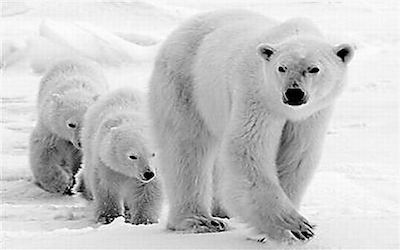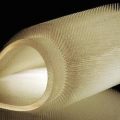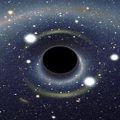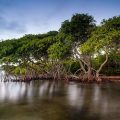PTE考生目前最大的问题之一就是练习题缺乏。除了有限的基本官方书(PLUS,Testbuilder, OG)之外
就没有题了。很多英语基础不是很扎实的同学很难找到练习材料。悉尼文波雅思PTE培训学校专门为澳洲,尤其是悉尼、墨尔本的PTE考生准备了适合PTE听力阅读练习的科学60秒。各位PTE同学可以练习PTE听力中的summarise spoken text和PTE口语中的retell lecture,PTE听力口语-科学60秒-Frosty Moss练习记笔记技巧和复述。废话少说,下面开始:
听力内容:
60秒科学节目(SSS)是科学美国人网站的一套广播栏目,英文名称:Scientific American – 60 Second Science,节目内容以科学报道为主,节目仅一分钟的时间,主要对当今的科学技术新发展作以简明、通俗的介绍,对于科学的发展如何影响人们的生活环境、健康状况及科学技术,提供了大量简明易懂的阐释。
This is Scientific American — 60-Second Science. I’m Jason Goldman.
When the Arctic Ocean freezes over in the autumn, polar bears set off in search of their favorite meals: fatty ringed seals and bearded seals. By the summer, the sea ice begins to melt and break apart. Deprived of access to the tasty seals, polar bears spend the summer fasting. At least, that’s what’s supposed to happen. As the planet warms, the warmer ice-free season is getting longer and longer. So what’s a hungry bear to do?
Scientists once thought that polar bears might survive by supplementing their pinniped diet by turning to terrestrial foods like snow geese, their eggs and caribou.
“We’ve had this debate in the literature about whether terrestrial foods are nutritionally relevant to polar bears during the on-land season when the ice has melted.” University of Alberta biologist Nick Pilfold.
“And we’ve known for a long time, going back to research in the early 70s, even going to back to early explorer logs, that polar bears will consume terrestrial based foods. But the debate was always whether those foods actually add up, energetically.” In other words, do these substitutes provide enough nutrition to make up for the lost seals?
To find out, Pilfold and his colleagues estimated the weight lost each day by polar bears in the wilds of western Hudson Bay during the ice-free season, when they could ostensibly be chowing down on terrestrial foods. Then they compared that to the weight lost by bears that are temporarily held in Manitoba’s Polar Bear Alert Program.
While captive, the bears do not eat. They drop about one kilogram each day. But the wild bears, who had access to the Arctic snack bar, lost the same amount of weight each day. The results are in the journal Physiological and Biochemical Zoology.
“Which is really saying that the terrestrial foods do not have dense enough energy to offset the mass loss. So this idea that bears can just switch from eating sea ice–based food to land food and that’s going to help supplement against longer ice-free seasons, that really doesn’t show up in the data.”
The problem is that polar bears evolved to rely on the marine diet.
“The food on land is protein and carbohydrate based, and the food the polar bears really focus on is fat. Fat is the name of the game for these bears; they’re highly adapted to absorbing that fat into their system and putting it onto their body as body mass, so they can fast on it later on. And the only thing that’s going to provide them with that type of fat are marine mammals. And they can only access those marine mammals when there’s sea ice.”
Adult males can go eight months without food. But younger, sub-adult bears, which are no longer nursing and must hunt, can’t last as long without sea ice. So as the Arctic warms, younger polar bears will disproportionately die out. Leaving the species’ survival in doubt.
Thanks for listening for Scientific American — 60-Second Science Science. I’m Jason Goldman.
墨尔本悉尼文波PTE原创首发
更多精彩请持续关注微信wenbo_tv2。





